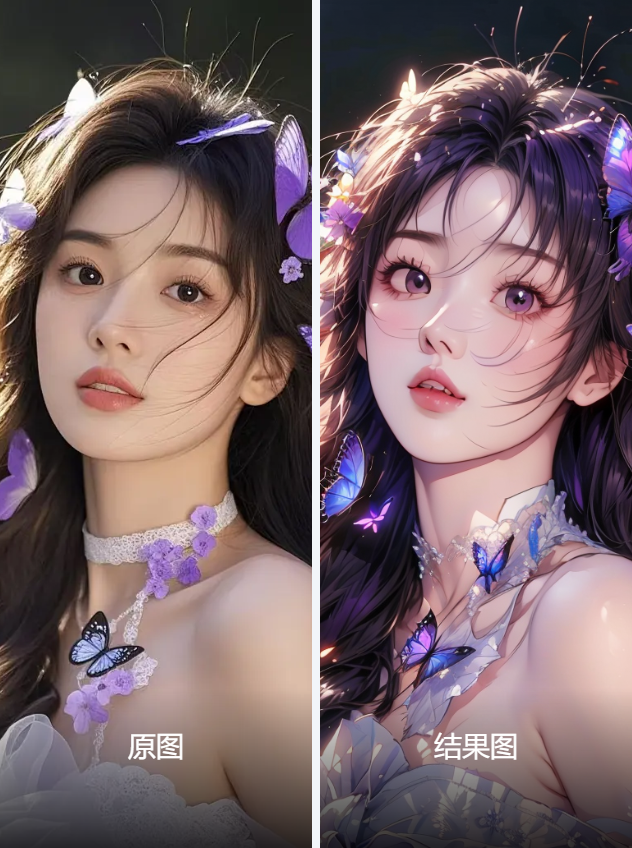From Real to Anime: A Deep Dive into Advanced Image Transformation Workflow
Workflow Overview

The primary purpose of this workflow is to transform input realistic-style images into another style (such as anime) while maintaining the details and structure of the images. By using multiple ControlNet models and IPAdapter, the workflow can precisely control the style and content of the generated images. This workflow is suitable for scenarios where realistic photos need to be converted into specific styles (such as anime, illustrations, etc.).
Core Models
The core models used in the workflow include:
Stable Diffusion: Used for generating high-quality images.
ControlNet: Used to control specific attributes of the generated images, such as edges, depth, and pose.
IPAdapter: Used to adapt and adjust the style of the generated images.
CLIP: Used for embedding representations of text and images.
Zoe-DepthMapPreprocessor: Used to generate depth maps.
OpenposePreprocessor: Used to extract pose information from images.
Component Description
Key components (Nodes) in the workflow include:
ControlNetApplyAdvanced: Applies ControlNet models to control specific attributes of the generated images.
PreviewImage: Previews the generated images.
Canny: Extracts edge information from images.
Zoe-DepthMapPreprocessor: Generates depth maps for images.
OpenposePreprocessor: Extracts pose information from images.
IPAdapterFaceID: Adapts the style of the generated images, particularly facial features.
LoraLoaderModelOnly: Loads Lora models.
CLIPTextEncode: Encodes text prompts into CLIP embeddings.
VAEEncode and VAEDecode: Used to encode and decode the latent representations of images, respectively.
KSampler: Used to sample generated images.
These components can be installed via ComfyUI Manager or manually from GitHub. Some components (such as ControlNet and IPAdapter) require additional pre-trained models, which can be downloaded and installed from Hugging Face or GitHub.
Workflow Structure
The workflow can be divided into the following main groups:
FACEID: Responsible for processing facial features and style adaptation.
Controlnet: Responsible for applying ControlNet models to control the attributes of the generated images.
Facial Images: Loads and processes input facial images.
Transformation Images: Loads and processes input images to be transformed.
Prompt Reverse Engineering: Generates and adjusts text prompts.
The input parameters and expected outputs for each group are as follows:
FACEID: Input parameters include facial images and style adaptation parameters, with the expected output being the adapted images.
Controlnet: Input parameters include edge, depth, and pose information, with the expected output being controlled images.
Facial Images: Input parameters are facial images, with the expected output being processed images.
Transformation Images: Input parameters are images to be transformed, with the expected output being processed images.
Prompt Reverse Engineering: Input parameters are text prompts, with the expected output being adjusted text prompts.
Input and Output
The expected input parameters for the entire workflow include:
Resolution: The resolution of the generated images.
Seed Value: Used to control the randomness of the generation process.
Prompt Words: Text prompts used for generating images.
Input Images: Realistic-style images to be transformed.
The workflow ultimately returns the generated stylized images.
Notes
When using the workflow, pay attention to the following points:
Error Handling: Some nodes may report errors due to mismatched input data or model loading failures, so carefully check input parameters.
Performance Optimization: Complex model inference may consume a lot of GPU resources, so it is recommended to run on high-performance GPUs.
Compatibility Issues: Some components may depend on specific versions of libraries or models, so ensure the environment is configured correctly.
Resource Requirements: Depending on the complexity of the workflow, high GPU and memory resources may be required.
开启新对话